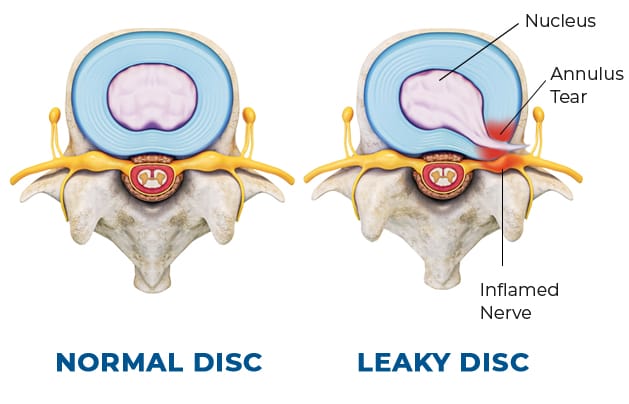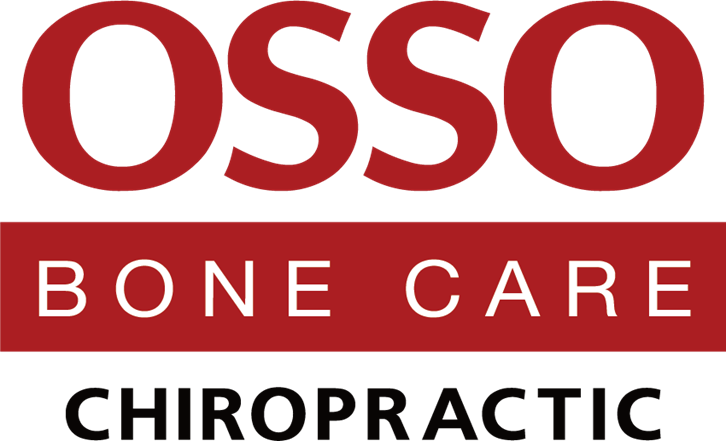Early Signs of a Spinal Disc Tear and What You Should Do
Back pain can be confusing. One day it’s just a dull ache after sitting too long, the next it’s a sharp, stabbing pain that radiates down your leg. Sometimes, these early signals could mean something more serious—a spinal disc tear. Also known as an annular tear, this injury involves the outer layer of a spinal disc cracking or weakening. Catching it early can make all the difference for recovery and long-term spinal health.
What is a Spinal Disc Tear?

Your spine is made up of stacked vertebrae separated by intervertebral discs. Each disc acts like a cushion, with a soft, gel-like center (nucleus pulposus) surrounded by a tough outer layer (annulus fibrosus). When the annulus is damaged, it’s called a disc tear. This damage can occur from aging, repetitive strain, poor posture, sudden trauma, or heavy lifting.
A disc tear is different from a bulging or herniated disc. While bulges and herniations involve displacement of disc material, a tear is specifically a crack in the outer layer, sometimes leading to leakage of the inner gel and irritation of nearby nerves.
Early Signs and Symptoms to Watch Out For
Spotting a spinal disc tear early can be challenging because its symptoms often resemble ordinary back strains or muscle fatigue. Being aware of the subtle warnings can make a significant difference in recovery and long-term spinal health.
Sudden, Localized Pain
One of the first signs is sharp, stabbing pain in the lower back, often triggered by a twist, bend, or lifting a heavy object. Unlike normal muscle soreness, which gradually eases after rest or light activity, pain from a disc tear can appear suddenly and linger for days or weeks. For example, a patient may find themselves wincing after picking up a grocery bag or even turning awkwardly in bed, realizing the pain persists well beyond normal fatigue.
Pain That Worsens with Movement
Movements that place stress on the spine like bending forward, twisting, coughing, sneezing, or standing up from a seated position, can intensify the pain. This is because these actions put pressure on the damaged disc, irritating surrounding nerves and muscles. Even routine activities, like getting out of a chair or tying shoelaces, can become uncomfortable.
Radiating Pain
If the disc tear irritates nearby spinal nerves, pain may travel beyond the lower back, radiating down the buttocks, thighs, or legs. This nerve-related pain often mimics sciatica and may be described as sharp, burning, or tingling. Patients often notice that the pain worsens after prolonged standing or walking, making daily life and work more challenging.
Stiffness and Limited Mobility
A torn disc can create a feeling of tightness or “locking” in the lower back. Flexibility may be reduced, making it difficult to bend, twist, or reach. Even light stretching may cause discomfort, signaling that the disc is inflamed or under strain. Some patients describe it as a persistent stiffness that doesn’t improve with a night’s sleep, unlike ordinary muscle soreness.
Numbness or Tingling
Pins-and-needles sensations, particularly in the legs, feet, or toes, suggest nerve involvement. This symptom often starts subtly— maybe a mild tingling in one foot after a long walk, but can progress if the tear worsens. Left untreated, nerve irritation can lead to weakness, difficulty walking, or balance problems.
Pain That Intensifies While Sitting
Sitting increases pressure on spinal discs by up to 40%, meaning a damaged disc may hurt more when you’re seated for extended periods. Office workers or drivers may notice that back pain flares up after just 20–30 minutes of sitting. This discomfort is often relieved when standing or walking, highlighting the mechanical stress on the injured disc.
Other Less Obvious Signs
Some patients report subtle changes such as fatigue in the lower back after minor activities, difficulty maintaining posture, or mild cramping in the hamstrings or calves. Though these symptoms may seem minor, they often indicate early disc damage that can worsen without attention.
Recognizing these early warning signs and seeking professional evaluation promptly is critical. Early intervention through chiropractic care, physiotherapy, or other conservative approaches can prevent further injury, reduce nerve irritation, and improve recovery outcomes.
What You Should Do If You Suspect a Disc Tear

Immediate Self-Care
Short periods of rest can relieve pain, but avoid prolonged bed rest. Ice and heat therapy can reduce inflammation and stiffness. Avoid lifting heavy objects until cleared by a professional.
Lifestyle Adjustments
Correcting posture, using ergonomic setups at work, and maintaining a healthy weight can reduce stress on the spine.
Non-Surgical Treatments
Chiropractic care, physiotherapy, spinal decompression, and anti-inflammatory strategies often help the disc heal while relieving nerve pressure.
When to Seek Urgent Medical Help
Certain warning signs indicate immediate medical attention is necessary:
- Loss of bladder or bowel control
- Severe leg weakness or paralysis
- Numbness around the groin or saddle area
These could signal serious nerve compression or spinal cord involvement, requiring emergency intervention.
Bounce Back from a Spinal Disc Tear with Osso Bone Care
Most disc tears heal with conservative treatment if caught early. Rehabilitation focuses on restoring mobility, strengthening the core, and preventing re-injury. Regular chiropractic or physiotherapy checkups, proper lifting techniques, and consistent exercise can help maintain spinal health.
Back pain isn’t something to ignore. A spinal disc tear may start subtly, but early detection and intervention can prevent chronic problems. If you notice sharp pain, radiating discomfort, numbness, or stiffness, don’t wait. Seeking professional care early can save your spine from further damage and keep you moving comfortably for years to come.
